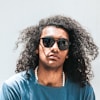Diffusion Models: The Next-Gen Solution for Image Super-Resolution in Photography
Understanding Image Super-Resolution (SR)
Wanna see your low-res photos turn into awesome, high-quality pics? Image super-resolution (SR) is the way to go, and it's getting super important for photographers.
Low resolution really makes things tough in photography. (Are These Common Photography Obstacles Getting in Your Way?)
- Camera hardware and sensor limits often mean you just can't capture all the detail in a photo.
- High-frequency details get lost during shooting and editing, making things less clear.
- SR is kinda an "ill-posed problem" – meaning one low-res image could have tons of different high-res versions. So, getting the right one is tricky.
Lots of ways have been invented to do image super-resolution.
- Interpolation methods (like nearest-neighbor, bilinear, bicubic) are simple but they really struggle to bring back fine details.
- Reconstruction-based methods use what they "know" about images (image priors), but they can take ages to compute.
- Learning-based methods (using CNNs) work better, but they can sometimes mess up really intricate textures. For example, images from satellites or planes, often called remote-sensing images, usually have low resolution because of the equipment, as a study in Remote Sensing pointed out Enhancing Remote Sensing Image Super-Resolution with Efficient Hybrid Conditional Diffusion Model.
Super-resolution tech gives photographers a bunch of cool benefits.
- You can blow up images for prints or big screens without them looking all pixelated.
- It can fix up old or bad-quality photos, making those memories look good again.
- It's great for making product photos for e-commerce look better, so listings are more appealing.
- You can add subtle details to portraits, making them look super professional.
As Brian B. Moser and his buddies said in a survey about diffusion models, image SR is getting really good at making image quality match what people actually like to see Diffusion Models, Image Super-Resolution And Everything: A Survey.
So, now that we've got the basics down, let's jump into diffusion models for image SR.
Introducing Diffusion Models for Image SR
Diffusion models are totally changing the game for image super-resolution, making upscaled photos look incredibly real. But how do these things actually work?
Diffusion models get their ideas from non-equilibrium thermodynamics. They basically have two main parts: a forward diffusion process and a reverse diffusion process.
- The forward diffusion process slowly adds noise to an image until it's just random noise.
- The reverse diffusion process learns how to undo that noise, creating high-resolution images. It's like carefully taking away blurriness to reveal a sharp picture.
These models are good at understanding image patterns, which lets them figure out bigger structures from low-res inputs. This means they can basically "imagine" the missing details really well.
Compared to other image-making models, diffusion models have some big pluses:
- Training is more stable than with Generative Adversarial Networks (GANs).
- They make really high-quality images with finer details than Variational Autoencoders (VAEs).
- They're great for "one-to-many" problems, like image super-resolution.
- They don't get stuck producing the same few images (avoiding mode collapse), which is a common problem with GANs.
The cool part about diffusion models is their main ideas:
- Markov chain definition: The diffusion process is like a Markov chain, where each step only depends on the one right before it.
- Gaussian noise addition: The forward process adds Gaussian noise, slowly messing up the image.
- Learning the reverse Markov diffusion chain: The model learns to reverse this whole thing, step by step.
- DDPMs (Denoising Diffusion Probabilistic Models) are used a lot for image SR, showing just how good these models have gotten.
Okay, so we've introduced diffusion models. Now let's see how they compare to the old-school SR methods.
How Diffusion Models are Applied to Image SR
Diffusion models bring a new way of thinking to image super-resolution, but how are they actually used? Let's break it down, showing the key steps that make these models so effective.
Diffusion models have two main parts: forward diffusion and reverse diffusion.
- Forward diffusion slowly turns a clean, high-res image into pure Gaussian noise. Imagine starting with a detailed photo and slowly blurring it until it's just random static.
- Reverse diffusion slowly denoises this "latent variable" (which is basically the noisy image), step by step, to create a high-res image. This process learns to reverse the noise, kind of like carefully taking away blurriness to reveal a sharp picture.
A big reason diffusion models work so well is the use of hybrid conditional features.
- The model looks at features from the low-resolution input image to guide the denoising. This makes sure the high-res image it creates still looks like the original.
- It mixes global, high-level features (which a Transformer network gets) with local visual features (that a CNN picks up). Transformers are good at understanding long-distance relationships in an image, while CNNs focus on useful local stuff.
At the core of the reverse diffusion process is the conditional noise predictor, which is usually a U-Net.
- This encoder-decoder setup captures both fine details and the overall picture context. Think of the encoder squishing the image down into a feature space, and the decoder rebuilding the high-res image from that space.
- Skip connections between the encoder and decoder help keep spatial info, so details don't get lost during processing.
- The U-Net gets inputs like the latent variable (the noisy image at a certain step), the low-res image features, and the time step (which tells it how far along the diffusion process is).
The model predicts the noise at each step of the reverse diffusion, guiding the image towards a high-resolution result.
So, we've seen how diffusion models are used. Now, let's look at how they stack up against traditional SR methods.
Enhancing Detail and Realism
Wanna get that perfect balance of detail and realism in your super-resolved photos? Diffusion models have ways to boost high-frequency details while making sure the final image looks natural.
One way to make image super-resolution better is by focusing on the high-frequency info, which often gets lost in low-res images. This lost info is key to bringing back fine details and textures.
- Using Fast Fourier Transform (FFT) can really bring out the high-frequency stuff in an image. FFT changes an image from its normal spatial view to a frequency view, making it easier to mess with specific frequencies.
- By calculating the loss in the high-frequency part of the Fourier space, the model can focus on bringing back those important details. This helps the model learn how to recreate missing high-frequency bits better.
- Pushing high-frequency spatial loss with Fourier constraints can really improve recognizing small things and making them clearer, especially in remote-sensing images. This is super useful for things like analyzing satellite pictures.
To make image quality even better, you can calculate both amplitude and phase loss. Amplitude is about how strong the frequency components are, and phase is about where they are located.
- Calculating the amplitude and phase loss makes sure both the intensity and the spatial arrangement of the high-frequency details are brought back correctly. This makes the image look more real and sharper.
- Adding a pixel loss function as a constraint can help keep the overall structure and colors of the image right. This constraint makes sure the super-resolved image stays true to the original.
- Combining Fourier high-frequency spatial loss and pixel loss leads to better image quality overall. This combo makes sure both fine details and the image's overall coherence are optimized.
Getting the right mix of detail and realism needs careful tweaking. By giving different loss parts different weights, you can fine-tune the model to make pictures that look great.
- A weighted mix of pixel loss and Fourier high-frequency spatial loss helps get the best balance. This lets you control exactly how much you boost detail versus keeping the whole image looking good.
- Picking the right hyperparameter is super important for the best results. These parameters decide how important each loss part is, and you should adjust them based on the specific images you're working with.
By focusing on high-frequency details and carefully balancing loss functions, diffusion models can create super-resolution images that are both detailed and look real.
Next up, we'll talk about how diffusion models are actually used in photography.
Overcoming Computational Bottlenecks
Wanna speed up your image super-resolution without losing quality? Getting past computational bottlenecks is key to making diffusion models actually useful for everyday stuff.
Diffusion models, while super powerful, can be slow because you need a bunch of steps in the reverse diffusion process. To fix this, you can use smaller noise prediction models, like U-Nets, which don't need as much processing power.
Another way is using model compression techniques, like pruning, quantization, Neural Architecture Search (NAS), and knowledge distillation. These methods make the model smaller and less complex, which means faster processing.
Feature distillation is a technique where knowledge gets passed from a big "teacher" network to a smaller "student" network. This lets the student network do almost as well but with way fewer resources.
To do feature distillation, you can cut down on the number of channels in the U-Net. Using 1x1 convolutional layers helps match the feature sizes between the teacher and student models. The goal here is to make distillation have as little impact as possible on the super-resolution results, so you still get high-quality output.
To balance speed and quality, you can use loss functions that measure the difference between the teacher and student models. Feature loss, soft loss, and hard loss can be combined to make the student model perform better.
Training student models using the teacher model's steps makes sure they learn efficiently from what the teacher knows. Balancing these things lets you create super-resolution images fast, without losing important details.
Now that we've looked at ways to deal with computational bottlenecks, let's get into the practical uses of diffusion models in photography.
Snapcorn: AI-Powered Image Enhancement for Photographers
Ready to make your photos really pop? Snapcorn has ai tools that make image enhancement for photographers super easy.
Snapcorn gives photographers a bunch of ai tools that are simple to use, helping them enhance images quickly and effectively. These tools can easily turn regular photos into amazing visuals.
- Snapcorn offers easy-to-use ai tools that can help photographers enhance their images fast and efficiently.
- Background Remover: Instantly get rid of backgrounds from portraits and product shots for clean, pro results.
- Image Upscaler: Make your photos bigger without losing detail, perfect for printing and large displays.
- Image Colorizer: Bring old black and white photos back to life by automatically adding realistic colors.
- Image Restoration: Fix damaged or faded photos, bringing back precious memories.
Snapcorn's ai tools are made to be user-friendly, giving you powerful features without making things complicated. You don't even need to sign up to start enhancing your images.
- Use advanced ai algorithms for top-notch image enhancement.
- No sign-up needed: start enhancing your photos right away.
- Free to use: get powerful tools without paying anything.
- Easy-to-use interface: navigate and enhance your images easily with just a few clicks.
Snapcorn makes your photography workflow simpler and faster, letting you focus on being creative. Automated features save you time and effort while still giving you professional quality.
- Automate boring tasks like background removal and image upscaling.
- Save time and effort while getting pro-quality results.
- Make your portfolio better and attract more clients with stunning, high-res images.
- Use ai to boost your creative abilities.
With Snapcorn, photographers can get pro-level results without much effort. Next, we'll check out the future trends and challenges in image super-resolution.
The Future of Image SR and Photography
Photography is about to get a major upgrade. Diffusion models are set to totally change image super-resolution, making photos better and more detailed than ever before.
Image super-resolution is moving fast, with diffusion models leading the charge. We can expect to see even better computational efficiency, making these models quicker and more accessible.
- More realism and detail recovery will happen thanks to advanced algorithms. This will let photographers create amazing, high-res images with super fine details.
- Integration with other ai-powered photography tools will make workflows smoother. Imagine easily combining super-resolution with other ai features for amazing creative control.
- The possibility of real-time super-resolution in cameras and mobile devices is also coming. As processing power grows, we might see this tech built right into our phones and cameras.
As ai tech gets better, it's important to think about the ethical side. We need to avoid making misleading or fake images, making sure ai is used responsibly.
- Being open about using ai in image enhancement is really important. Photographers and users should know when ai has been used to change or improve an image.
- Respecting copyright and intellectual property is also key. Ai tools shouldn't be used to break copyrights or make new works without permission.
Ai tools aren't replacing photographers, but they're helping them do more. That survey on diffusion models we mentioned earlier, it really showed how the gap between image quality and what people like to see is shrinking.
- Photographers can focus on creativity and their artistic ideas instead of getting stuck on technical limits.
- Using ai to get past technical hurdles and open up new possibilities creates exciting ways to express yourself artistically.
- Ai tools let photographers bring their visions to life much more easily.
The future of image SR and photography looks really bright, with diffusion models paving the way. As these technologies keep improving, photographers will be more and more able to create stunning and realistic images.









